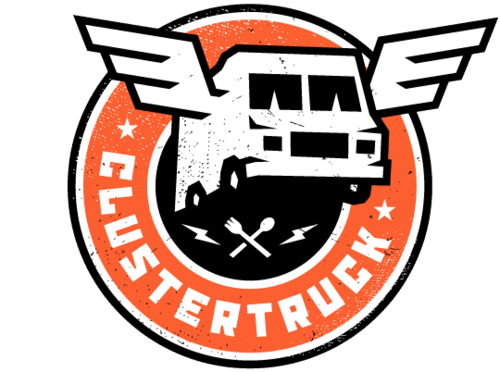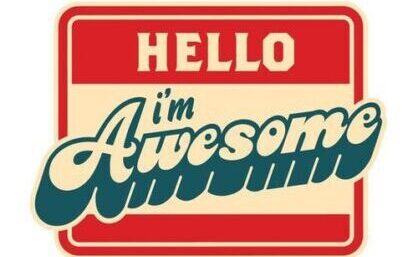
Have you ever heard a brand name that completely captured your attention or made you want to learn more about that brand? I recently read a story about a newly launched meal delivery service in the mid-west called Clustertruck. That name shocked me at first, then made me curious. I wondered, “Why Clustertruck? What kind of food do they make? Do they use profanity when they deliver it to you? Maybe the food is given to you in a paper bag? Maybe their truck is a junker?” And while the name didn’t tell me much about the offering or positioning of the brand, it still had power. It drew me in. I’d remember it. I’d tell my friends about it. It made me laugh. It made me think, “That brand has guts and personality. I want what they’re making”
Rival currently has two clients that are at common yet different extremes on the topic of brand naming. Because of signed NDA’s I can’t go into much detail about what each of them does or, obviously, what their names are. Their respective situations represent what can be powerful or problematic about naming your brand.

Client “A” is a start-up. Their name is conjoined, meaning, it’s a combination of two separate words that together create a new word. What’s clever and unique about their name is that it describes the action you need to perform to use their product. It’s a fun word to say, it’s super easy to pronounce, and very, very simple in it’s concept. When I first heard it, it made me feel like I did when I heard Clustertruck— I wanted to lean more. And after they described their product to me, the meaning, personality, and performance of their name simply struck me as brilliant. It’s virtually a rally cry for their brand and a marketer’s dream. So even though their name is a made up word, the meaning behind it is easy to understand. So from a branding standpoint, the amalgamation of traits their name has will support them very well as they launch and grow.
Client “B” has been in business for seven years. Their name style falls into a category called, “functional”. That means the name describes, in a somewhat literal way, their product. When they coined their name it supported them very well. The name gave customers and consumers insight into what made their products different. The name itself was somewhat unique and easy to say. And the name was positive. You wouldn’t derive anything negative when you heard the name. But one of the traits of functional names is that they don’t provide flexibility for the brand. If a name is derived by describing your product then what happens when you want to sell OTHER products that fall outside of the functional description? That’s what is happening to Client “B”. They have transitioned their offering away from their original products to a more profitable and sell-able genre of goods. So their name has lost it’s relevance. They currently are trying to decide whether to change their name or keep it.
In both client examples, names were selected for all the right reasons. But the fact is, naming is hard— really, really, hard. While there are widely accepted measures of what makes a strong brand name, each naming situation is different and requires an informed approach that can lead you to a solid naming strategy.
So here’s our “informed approach”. Lean into it. Put as much energy into it as you can and you just might come up with an amazing name.“DING DING”
1. DISCOVERY
This is where you put everything on the table so you can see what your brand comprises (your brand compass). You should have a solid brand strategy and positioning in place before you start the naming process. And there are other things to consider. What are the opinions of key stakeholders regarding the renaming proposition? What are their concerns? How do you define a successful name for your brand? What naming style will best suit your brand architecture? It’s imperative to reach a consensus as to what the objective criteria are for a new name. You should have a clear checklist of attributes that you require of a name, so when a list of contenders is presented, the decision doesn’t boil down entirely to gut feeling.
TIP: Keep in mind when developing your criteria, that a great brand name doesn’t try to represent too much. Focus on one central idea, instead of trying to come up with a name that captures everything your organization stands for.
2. BRAINSTORM
Brainstorming is a collaborative process amongst strategists and stakeholders. Gather the raw ideas that will serve as fodder for your name. These ideas should be inspired by the core messaging and business objectives of your organization, and directed by the criteria you established in the discovery phase. The end result of the brainstorming phase should be a list of unrefined concepts (and/or names) that can be refined later in the naming process.
TIP: Don’t filter your ideas. Every idea counts in this phase. Think unconventionally and take risks. The criteria defined during the discovery phase will be later used as a guide to determine whether or not an idea is sound.
3. REFINEMENT
If the result of the brainstorming phase is a collection of concepts, the refinement phase is where you tease out legitimate names from those concepts. The list should be a long. Each name on your list should generally fit the criteria established in the discovery phase. With list in hand, the process of whittling begins using the criteria from the discovery phase as your benchmark. You can also test the name by doing a quick Google search to see what pops up for each name. Does someone else own the name? Is the name directly associated with any negative press or connotations? The outcome of the refinement phase should be a “shortlist” of names—half a dozen or less—that meet the brand’s criteria and don’t raise any initial red flags.
TIP: Should a name make the cut? Try putting the name in hypothetical contextual situations. How will the name look on a business card? A website? How does it sound when spoken out loud
4. TESTING
It’s getting real now. Time to judge qualitative factors, like marketability, aesthetics, relevance, tone of voice, and ability to differentiate you from your competition. Will a name tell a meaningful story about your brand? How will it work into your brand’s narrative? In addition, you must start screening for legal viability and potential trademark issues. Trademark availability can be a challenging hurdle. While you can perform an online trademark search at the U.S. Patent and Trademark Office website, it doesn’t provide absolute assurance. The availability of URLs and social media channels should be assessed as well.
TIP: For a higher level of certainty before making an investment in a name, hire a trademark attorney to research and register your selected name. It can be a very wise investment that can save you headaches later.
5. SELECTION AND LAUNCH
Is this the hardest part? Maybe. Use everything you’ve learned in this process to illuminate the relative value in each of the names on your list. Once you’ve got consensus amongst decision-makers, PULL THE TRIGGER! This is your moment to shine and beat your drums. It can be either terrifyingly or thrilling. Using this process will help make it more of the latter.
TIP: In the end, choosing a name does require that you trust your gut feelings. Your intuition should be telling you which of your final names feels right, and best aligns with your brand personality